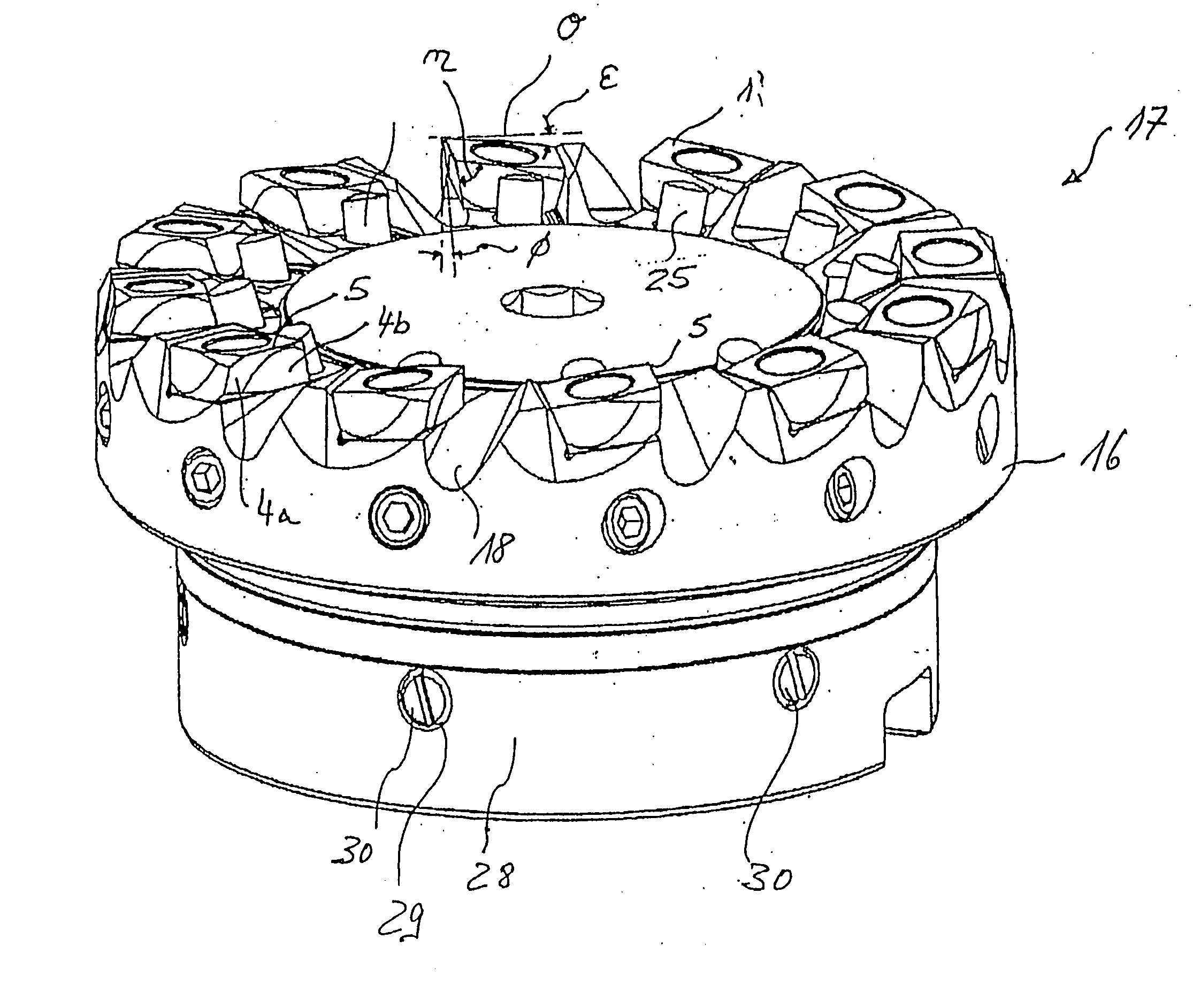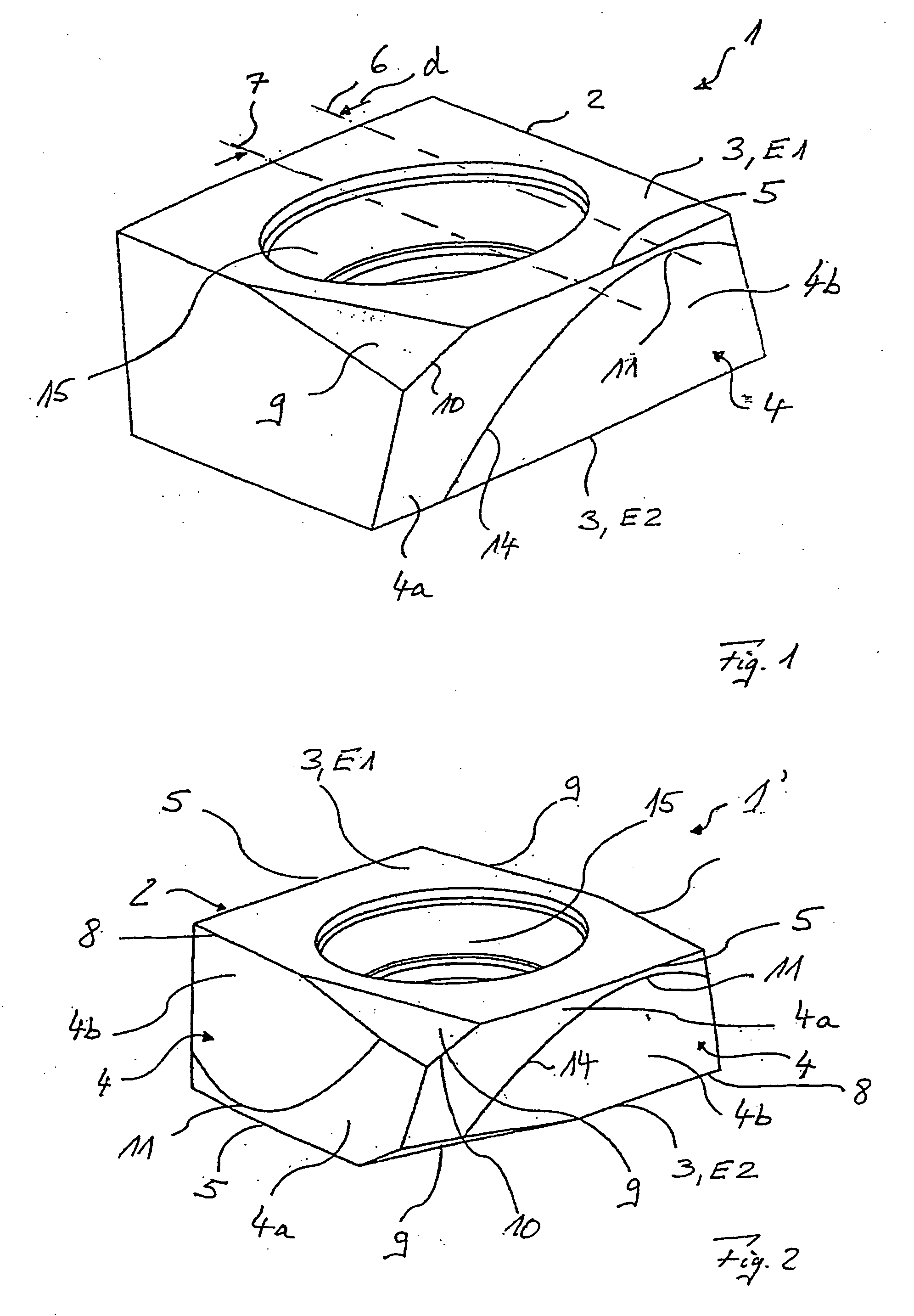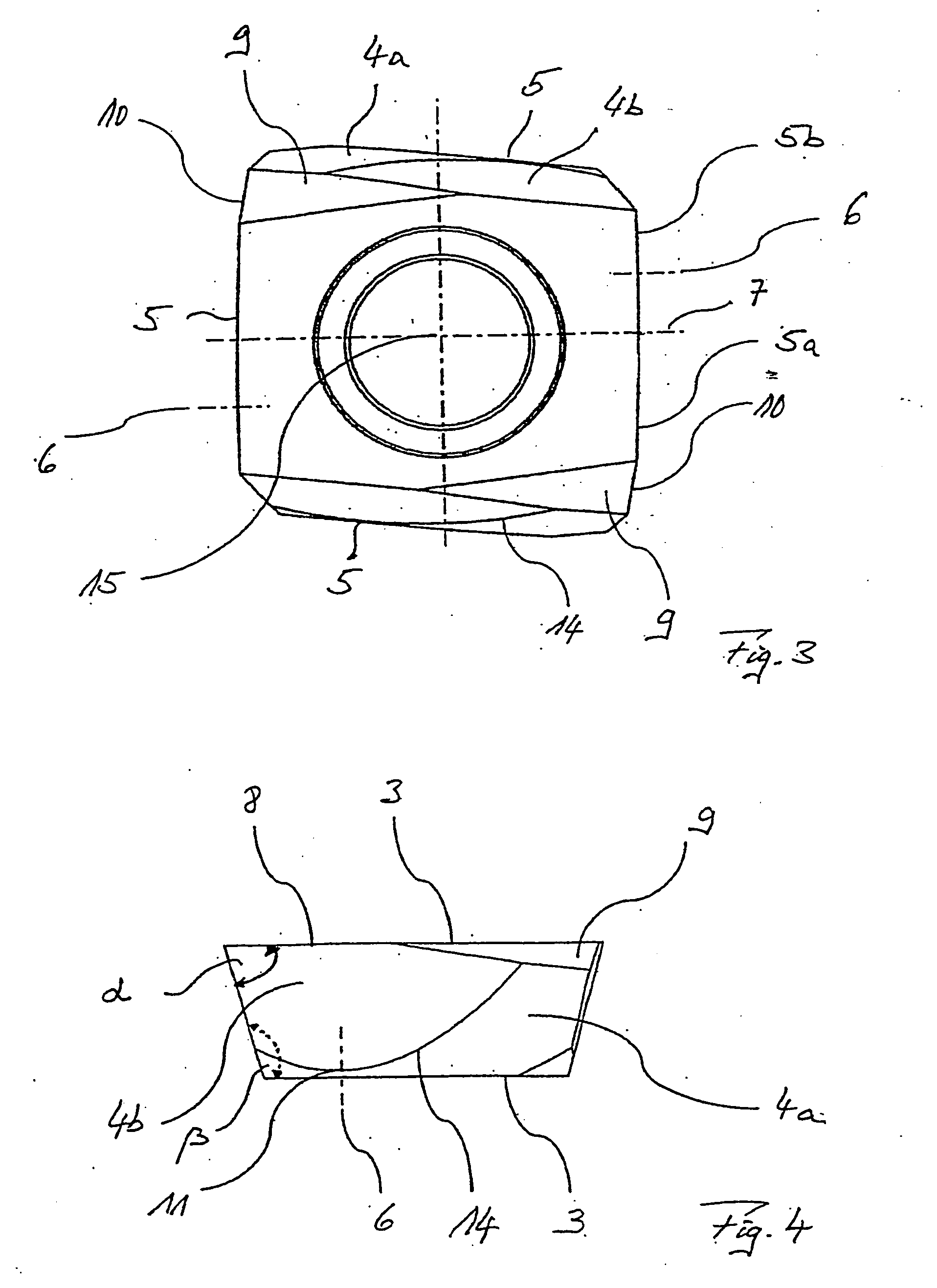Cutting insert and milling cutter with such a cutting insert
- Summary
- Abstract
- Description
- Claims
- Application Information
AI Technical Summary
Benefits of technology
Problems solved by technology
Method used
Image
Examples
Embodiment Construction
The cutting insert 1 illustrated in FIG. 1 comprises a base body 2 with two base surfaces 3 that are disposed in plate planes E1 and E2 that are disposed oppositely with respect to one another. The cutting insert 1 also comprises a lateral surface 4 with a cone-mantle-shaped surface portion 4a and a planar surface portion 4b. The cone-mantle-shaped surface portion 4a, as well as the base surface 3 that is facing it are disposed with respect to one another under an acute angle α (FIG. 4) and form a cutting edge 5. The planar surface portion 4b is disposed at an obtuse angle β (FIG. 4 with the oppositely disposed base surface 3.
The cutting edge 5 has a curved or arcuate course that is disposed within the plane E1 of the base surface 3, with off-centered—and, accordingly, asymmetrical—bulging of the cone-mantle-shaped surface portion 4a. Thereby, the cone axis 6 that is disposed in the plate plane E1 of the cone-mantle-shaped surface portion 4a, while forming the off-centered arcuat...
PUM
 Login to View More
Login to View More Abstract
Description
Claims
Application Information
 Login to View More
Login to View More - R&D
- Intellectual Property
- Life Sciences
- Materials
- Tech Scout
- Unparalleled Data Quality
- Higher Quality Content
- 60% Fewer Hallucinations
Browse by: Latest US Patents, China's latest patents, Technical Efficacy Thesaurus, Application Domain, Technology Topic, Popular Technical Reports.
© 2025 PatSnap. All rights reserved.Legal|Privacy policy|Modern Slavery Act Transparency Statement|Sitemap|About US| Contact US: help@patsnap.com



